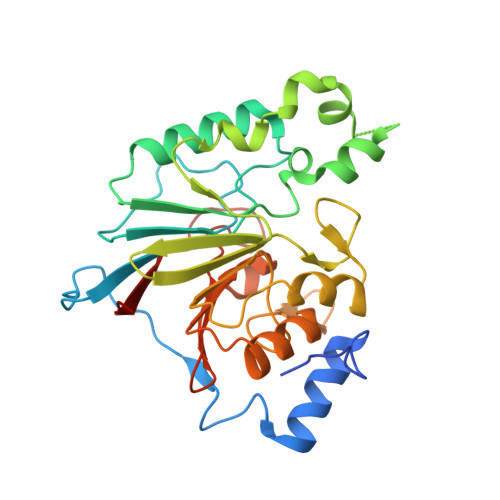Unique utilization of a phosphoprotein phosphatase fold by a mammalian phosphodiesterase associated with WAGR syndrome.
Dermol, U., Janardan, V., Tyagi, R., Visweswariah, S.S., Podobnik, M.(2011) J Mol Biol 412: 481-494
- PubMed: 21824479
- DOI: https://doi.org/10.1016/j.jmb.2011.07.060
- Primary Citation of Related Structures:
3RL3, 3RL4, 3RL5 - PubMed Abstract:
Metallophosphoesterase-domain-containing protein 2 (MPPED2) is a highly evolutionarily conserved protein with orthologs found from worms to humans. The human MPPED2 gene is found in a region of chromosome 11 that is deleted in patients with WAGR (Wilms tumor, aniridia, genitourinary anomalies, and mental retardation) syndrome, and MPPED2 may function as a tumor suppressor. However, the precise cellular roles of MPPED2 are unknown, and its low phosphodiesterase activity suggests that substrate hydrolysis may not be its prime function. We present here the structures of MPPED2 and two mutants, which show that the poor activity of MPPED2 is not only a consequence of the substitution of an active-site histidine residue by glycine but also due to binding of AMP or GMP to the active site. This feature, enhanced by structural elements of the protein, allows MPPED2 to utilize the conserved phosphoprotein-phosphatase-like fold in a unique manner, ensuring that its enzymatic activity can be combined with a possible role as a scaffolding or adaptor protein.
Organizational Affiliation:
Laboratory for Biosynthesis and Biotransformation, National Institute of Chemistry, Hajdrihova 19, SI-1000 Ljubljana, Slovenia.


















